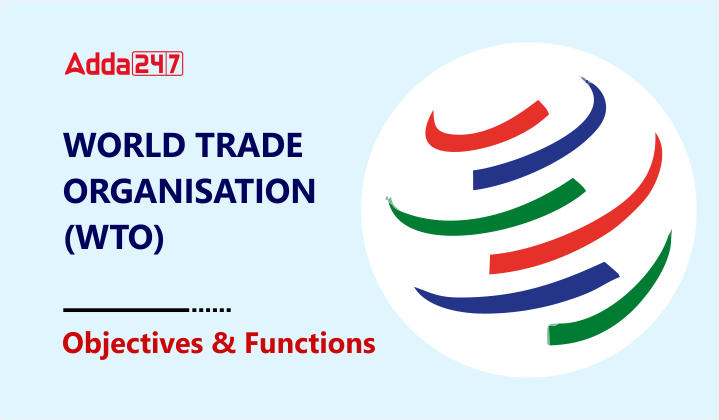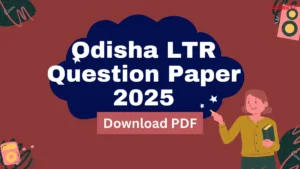Table of Contents
The World Trade Organization (WTO) oversee the economic and commercial relations between nations. In this article, we learn about the emergence of the World Trade Organization (WTO), its objectives, its core principles and its functions. With a deep understanding of the World Trade Organization, candidates preparing for the UGC NET Commerce Exam 2023 will be able to understand the role the Organization plays on the international platform and ace the exam accordingly.
What is WTO?
The WTO or World Trade Organization is the only international organization that deals with the global rules of trade between nations. It ensures that trade flows smoothly, predictably and as freely as possible since its establishment on 1 January 1995. The WTO is a successor global trade organization to the GATT which came into being on 1 January 1948 as a result of an agreement among 23 proponent countries to have a multilateral trade regulating organization in place of an International Trading Organization (ITO). Thus, this organization provides a global platform for countries to trade in goods and services.
Emergence of WTO
The WTO came into being on 1 January 1995. There were 148 member nations who participated in the Uruguay Round (UR), resulting in the General Agreement on Tariffs and Trade (GATT) being transformed into an international organization that oversees the work of the rules-based multilateral trading system. As we have seen, the WTO is the result of a series of trade agreements negotiated during the Uruguay Round (1986–94), the eighth and final trade round conducted under the GATT. Below are the major highlights of the organization.
| World Trade Organization Overview | |
| Establishment | 1st January 1995 |
| Agreement round | Uruguay round (1986-1994) |
| Treaty signed | Treaty of Marrakesh |
| Initial membership | 148 member nations |
| Current membership (by 2023) | 164 member nations |
| 164th member country | Afghanistan |
Objectives of World Trade Organization
The world trade organization is established with the following objectives. These are enlisted below:
(i) Expansion of Production and Trade in Goods and Services
Its relations in trade and economics shall be conducted in a manner that it raises standards of living, ensure full employment to the people and a large and steadily growing volume of real income and effective demand, and expand the production and trade in goods and services.
(ii) Optimal Use of World’s Resources
It shall bring about the optimal use of the world’s resources within the framework of sustainable development, seeking both (a) to protect and preserve the environment, and (b) to improve the means for doing so in a manner consistent with the respective needs and concerns of member nations which are at different levels of economic development.
(iii) Concerted Efforts for Developing Countries
It shall make concerted efforts to ensure that developing countries, primarily the least developed amongst them, secure a steady share in the growth in international trade consistent with the requirements of their economic prosperity.
(iv) Formulation and Implementation of Mutually Beneficial Agreements
The World Trade Organization focuses on negotiating reciprocal and mutually advantageous agreements so as to bring about a sub-substantial reduction of tariffs and other barriers to trade and the eradication of discriminatory treatment in international trade relations.
(v) Establishing a Multilateral Trading System
It shall move towards an integrated, viable and durable multilateral trading system covering the GATT, the benefits accruing from past liberalization efforts and all the results of the Uruguay Round of multilateral trade negotiations (MTNs).
(vi) Linking Policies and Practices
It shall bring about the linkage between policies and practices relating to trade, environment and sustainable development.
Principles of World Trade Organization
The five core principles of the World Trade Organization are explained below.
(i) Principle of Trade without Discrimination
This principle implies that the WTO follows the most-favoured-nation (MFN) status and national treatment. The MFN implies, in simple terms, that a trade concession granted to one member country of the WTO is automatically extended to all other members. National treatment implies that equal treatment is extended to imported goods in a member’s market as is granted to its domestically produced goods.
(ii) Free Trade through Progressive Liberalization of Trade Regimes
The very objective of setting up a global organization like the WTO is to ensure free trade between countries by removing tariff and non-tariff barriers and other hindrances to the free flow of goods and services. As per this second principle, WTO would ensure freer trade through progressive liberalization of trade regimes.
(iii) Predictability of Trade Rules
The predictability of trade rules is a sine qua non for the free and smooth flow of goods and services between countries. In this context, predictability would imply that the WTO ensures that governments of member countries do not raise arbitrarily existing tariffs or non-tariff barriers.
(iv) Fair Competition
This principle emphasizes fair competition in international trade that ensures a level-playing field between trading partners. Fair competition will minimize market distortions caused by export subsidies, dumping and similar disruptive trade practices.
(v) Economic Development through Trade
Developing countries attempt to enact trade policies to suit their requirements of increasing the levels of income and standard of living. The fifth principle of the WTO endeavours to promote the economic growth of poor and developing countries through trade assistance and enhanced market access by enabling them to enter into preferential trade arrangements.
Functions of World Trade Organization
The WTO’s major function is to supervise and implement trade regulations in the worldwide economy. The organization administers the multifaceted trade agreements scheduled in the WTO agreement. The primary functions of the WTO are as follows:
- (i) It helps in the implementation, administration and realization of the objectives for which it was established.
- (ii) It provides the framework for the implementation, administration and operation of the trade agreements related to trade in civil aircraft, government procurement, trade in dairy products and bovine meat.
- (iii) It figures out the meeting place for negotiations amongst its members relating to their multinational trade relations in matters related to the agreements and framework for the implementation of the results of such negotiations, as determined by the Ministerial Conference.
- (iv) It puts into practice the understanding of rules and procedures concerning the Settlement of Disputes of the Agreement.
- (v) It seeks to cooperate with the IMF and the World Bank and its affiliates with a view to realizing greater coherence in global economic policy-making.
Conclusion
In a nutshell, the World Trade Organization is a global organization that has contributed significantly to reducing the tariff and non-tariff barriers to trade in both developed and developing countries. As a result, this has ensured the tremendous expansion of global trade and the advantages it brings with it, such as the modernization of industries, greater employment and a better standard of living for people of member countries.




 Odisha LTR Question Paper 2025, Check Su...
Odisha LTR Question Paper 2025, Check Su...
 HPSC Assistant Professor Final Answer Ke...
HPSC Assistant Professor Final Answer Ke...
 HPSC Assistant Professor Question Paper ...
HPSC Assistant Professor Question Paper ...




